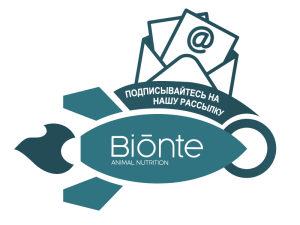Introduction
When it comes to rationing dairy cows or steer, there is a trend to not consider mycotoxins contamination as a parameter for silage quality. One of the most frequent mistakes made by farmers is to claim that their silage does not contain mycotoxins as no mold is visible on the surface. However, there is little relationship between the presence of molds and the presence of mycotoxins in silage, since the contamination could be hidden (Zain, 2011).
Silage may contain a mixture of mycotoxins which can arise from different source such as pre-harvest (Uegaki et al., 2013; Gallo et al. 2015) and postharvest contamination (Fink-Gremmels, 2008; Alonso et al., 2013). Pre-harvest contamination involves the presence of Fusarium and Aspergillus species, while Aspergillus and Penicillium characterize postharvest contamination. Fusarium mycotoxins includes fumonisins (FBs), T-2 toxin (T-2), zearalenone (ZEN) and deoxynivalenol (DON). All of them are highly stable and seem to be the principle mycotoxins found in silage.
Although the silage process does not provide the optimal conditions for Fusarium species to grow, due to the low pH and anaerobic conditions, it has been shown that some toxins remain unchanged, and therefore remain active (Uegaki et al., 2013). In the same fodder managing phase, Aspergillus although contamination by this fungus normally takes place during the post-harvest phase, thus producing the well-known aflatoxin B1 (AFB1).
In fact, Aspergillus species are usually prone to contaminate the matrix during postharvest phase, with the production of the well-known aflatoxin B1 (AFB1). This mold species can also produce ochratoxin A (OTA), another harmful mycotoxin for human and animals, whose concentrations in silage are low, due to the incompatibility with high concentrations of acetic acid and CO2 produced during the silage process (Gallo et al., 2015). Another specie involved in postharvest contamination is Penicillium roqueforti, which can tolerate acids substrate and low oxygen concentrations (O’Brien et al., 2006). Its toxins, mycophenolic acid and roquefortines are the most studied Penicillium toxins due their high prevalence in ensiled forage (Gallo et al., 2015).
Lastly, Alternaria toxins, such as alternariols, altertoxins, altenuene, tentoxin, phomapyrones, dehydrocurvularin, tenuazonic and pyrenochaetic acid can also infect silage during the storage phases (Gallo et al., 2021; Xin Mao et al., 2023).
Contribution of silage to the total amount of mycotoxins ingested by cows
The level of mycotoxins in feeds can widely change year by year, due to several factors, as temperature, humidity and good farming practices. Ruminants diets include both forage and concentrates, which increase mycotoxins exposure, compared with monogastric diets. (Gallo et al., 2015).
It has been widely believed that ruminants are less sensitive to mycotoxins, due to their microbial detoxification. However, mycotoxins metabolized into ruminal environment can produce several harmful forms, such as the DON-3-glucoside generated by DON, or AFM1 produced by AFB1. Mycotoxins and their metabolites can impair animal health, their productivity and reduce the quality of their products, especially if the contamination include the co-occurrence of two or three mycotoxins which can exert negative synergistic effects.
Although research on mycotoxin contamination has primarily focused on cereal grains due to their significant inclusion in animal diets, studies on silage have shown that it can exceed the maximum concentrations allowed for ruminant diets by the European Union and Food and Drugs Administration, FDA (Table 1; adapted from Ogunade et al., 2018).


Table 1. Total amount of mycotoxins ingested by cows (adapted by Ogunade et al., 2018)
Conclusion: What can be done to reduce mycotoxins in silage?
The successful management of mycotoxin contamination in animal feed requires a comprehensive approach covering several stages of production. For these reasons, in order to minimize and control mycotoxin contamination in silage, it should be considered:
- Preharvest phase. Minimize environmental stress through adequate agronomic practices (Edwards, 2004; Whitlow and Hagler, 2005).
- Harvest phase. Earlier harvest can reduce mycotoxins contamination levels. Moreover, it is quite important planning the harvesting time to maximize yield, dry matter concentration and nutritive values (Jouany, 2007).
- Ensiling phase. Silos should be filled rapidly after harvest, to ensure the recommended density and anaerobic conditions (Jouany, 2007).
- Mycotoxins analysis. Understand mycotoxins contamination levels could help to establish the right detoxification strategy.
- Use anti-mycotoxins agents. The mycotoxins contamination levels will determine the level of risk. Once this is done, the specific anti-mycotoxins product could be added to animals diet, in order to reduce the detrimental effects.
- Support. Support bovine gut health with the proper mix of probiotics and phytogenic additives to boost nutrient absorption and immunity.



